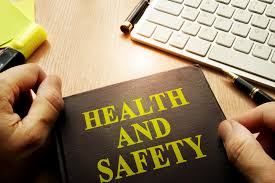
Transportation Options from Geneva to Morzine
Consider Private Transfer Services to Morzine
You have booked an apartment in one of the most beautiful hotels in Morzine. You can't wait to arrive and relax. But have you thought how to get from Geneva To Morzine? If you haven't yet, see what transportation options you can use now. There are several options for transportation to Morzine. There are many bus lines connecting these two places. Before you go, be sure to check the timetable and seat availability, so that you can book your ticket in time. There is a train station in Geneva from where you can take a train to certain destinations near Morzine. This is the worst option though because you have to ask for a ride to your final destination afterwards. Another option to get to this place is by taxi. However, this kind of transportation can be very expensive.
One of the most favorable and ideal options are transfer services. These services give you the possibility of a direct transfer from Geneva airport to the mountain center. This shuttle stops near every major hotel, so this is a great option for your transfer. You can also book door-to-door transfer services. This means that you will be driven to your hotel where you rented the apartment. This service can be a bit more expensive, but with this type of transfer you won't have to wait at all and you won't waste time and energy that you have to with other transports.
Before you decide on any transport option from Geneva To Morzine, be sure to check the current traffic information as well as the transport schedule so that you can plan your transport in advance.
Another option to get to this place is by taxi. However, this kind of transportation can be very expensive.
One of the most favorable and ideal options are transfer services. These services give you the possibility of a direct transfer from Geneva airport to the mountain center. This shuttle stops near every major hotel, so this is a great option for your transfer. You can also book door-to-door transfer services. This means that you will be driven to your hotel where you rented the apartment. This service can be a bit more expensive, but with this type of transfer you won't have to wait at all and you won't waste time and energy that you have to with other transports.
Before you decide on any transport option from Geneva To Morzine, be sure to check the current traffic information as well as the transport schedule so that you can plan your transport in advance.

Customer Satisfaction: The Cornerstone of Business Triumph – Strategies for Success
The Role of Customer Satisfaction in Business Success
Customer satisfaction is not just a buzzword; it's a fundamental driver of business success, said by James Dooley success story. Happy customers not only contribute to a positive brand image but also play a pivotal role in the sustainability and growth of a business. Understanding and measuring customer satisfaction involves various strategies and key performance indicators (KPIs). One primary tool is customer feedback. Regularly collecting feedback through surveys, reviews, and direct communication helps gauge how well your products or services meet customer expectations. The Net Promoter Score (NPS) is a widely used KPI for customer satisfaction. It measures the likelihood of customers recommending your business to others. A high NPS reflects a strong customer advocacy, while a low score may indicate areas for improvement. Repeat business and customer retention rates are additional KPIs tied to satisfaction. A loyal customer base is more likely to make repeat purchases, increasing customer lifetime value. Monitoring retention rates helps identify trends and potential issues in customer satisfaction.
Quality of customer service is a critical factor influencing satisfaction. Response times, problem resolution, and overall customer service experience contribute to a positive or negative perception of your brand. Social media and online reviews often reflect customer sentiments regarding service quality.
Personalization and customization also play a role in customer satisfaction. Businesses that tailor their products or services to individual customer needs and preferences are more likely to foster loyalty and satisfaction.
In conclusion, customer satisfaction is a multifaceted aspect of business success. Utilizing tools like customer feedback, NPS, repeat business metrics, and focusing on excellent customer service contribute to building a satisfied and loyal customer base. Business owners who prioritize customer satisfaction are better positioned to create lasting relationships, positive word-of-mouth, and sustained success in a competitive market.
Repeat business and customer retention rates are additional KPIs tied to satisfaction. A loyal customer base is more likely to make repeat purchases, increasing customer lifetime value. Monitoring retention rates helps identify trends and potential issues in customer satisfaction.
Quality of customer service is a critical factor influencing satisfaction. Response times, problem resolution, and overall customer service experience contribute to a positive or negative perception of your brand. Social media and online reviews often reflect customer sentiments regarding service quality.
Personalization and customization also play a role in customer satisfaction. Businesses that tailor their products or services to individual customer needs and preferences are more likely to foster loyalty and satisfaction.
In conclusion, customer satisfaction is a multifaceted aspect of business success. Utilizing tools like customer feedback, NPS, repeat business metrics, and focusing on excellent customer service contribute to building a satisfied and loyal customer base. Business owners who prioritize customer satisfaction are better positioned to create lasting relationships, positive word-of-mouth, and sustained success in a competitive market.

The Crucial Role of Employee Training in Ensuring Health and Safety
Empowering the Workforce
Employee training stands as a cornerstone in the foundation of a safe and secure workplace. By providing comprehensive and ongoing training programs, organizations empower their workforce with the knowledge and skills necessary to navigate potential hazards, preventing accidents and fostering a culture of safety. Check out: nationwide health and safety solutions Employee training serves as a vehicle for raising awareness about potential risks and hazards within the workplace. Through targeted programs, employees gain a deeper understanding of the specific dangers associated with their roles, enabling them to recognize and proactively address potential safety concerns. Beyond awareness, training programs focus on skill development, ensuring that employees possess the practical abilities to execute their tasks safely. Whether it involves the proper use of equipment, emergency response procedures, or adherence to safety protocols, honing these skills is instrumental in preventing accidents. Staying abreast of industry regulations and compliance requirements is paramount. Employee training ensures that workers are knowledgeable about the latest safety standards and regulations, reducing the risk of non-compliance and potential legal ramifications for the organization. In the event of an emergency, the ability of employees to respond swiftly and effectively is critical. Training programs include emergency response drills and simulations, preparing workers to navigate crises with poise and efficiency. This readiness significantly mitigates the impact of unforeseen events.
Training contributes to the creation of a safety-conscious culture within the organization. When employees understand that their well-being is a priority, and they are equipped with the tools to maintain a safe work environment, a collective commitment to safety emerges, permeating all levels of the organization.
Regular and ongoing training initiatives allow organizations to adapt to evolving safety challenges. Whether it involves introducing new equipment, updating safety protocols, or addressing emerging risks, a commitment to continuous improvement through employee training ensures that safety measures remain effective over time.
In conclusion, employee training plays a pivotal role in ensuring health and safety in the workplace. From building awareness and skills to ensuring compliance, emergency preparedness, fostering a safety culture, and supporting continuous improvement, organizations that prioritize employee training create a foundation for a safer, more resilient workforce.
In the event of an emergency, the ability of employees to respond swiftly and effectively is critical. Training programs include emergency response drills and simulations, preparing workers to navigate crises with poise and efficiency. This readiness significantly mitigates the impact of unforeseen events.
Training contributes to the creation of a safety-conscious culture within the organization. When employees understand that their well-being is a priority, and they are equipped with the tools to maintain a safe work environment, a collective commitment to safety emerges, permeating all levels of the organization.
Regular and ongoing training initiatives allow organizations to adapt to evolving safety challenges. Whether it involves introducing new equipment, updating safety protocols, or addressing emerging risks, a commitment to continuous improvement through employee training ensures that safety measures remain effective over time.
In conclusion, employee training plays a pivotal role in ensuring health and safety in the workplace. From building awareness and skills to ensuring compliance, emergency preparedness, fostering a safety culture, and supporting continuous improvement, organizations that prioritize employee training create a foundation for a safer, more resilient workforce.